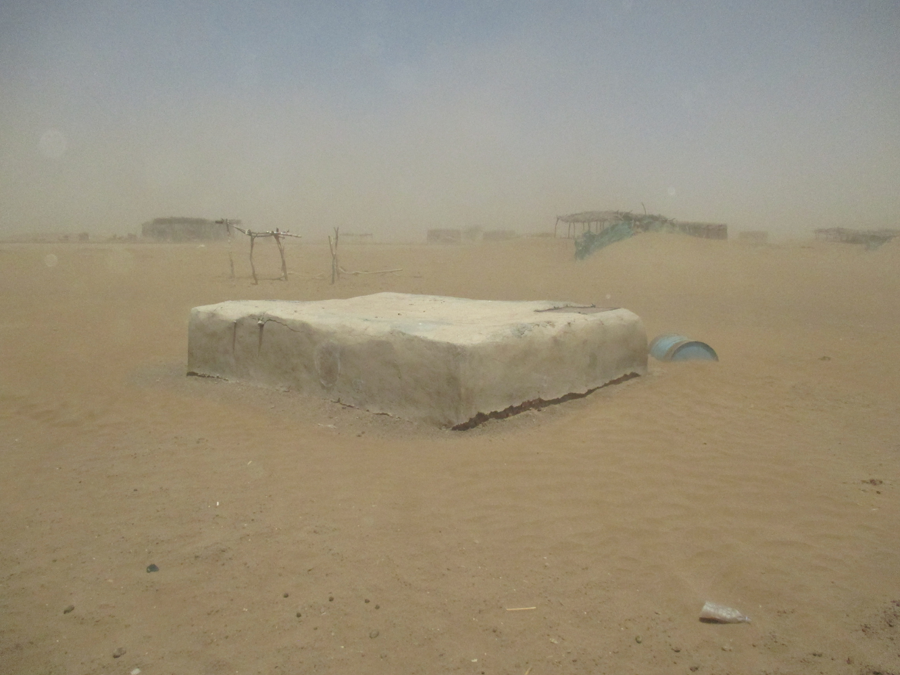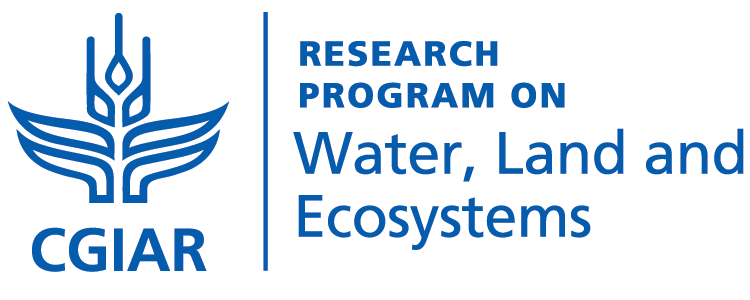By Frank van Steenbergen, Yasir Abbas Mohamed, Abraham Mehari Haile
May 7, 2015

Small Water tank in Gash Die
This is the Gash Die and water is hard to get by. Many people have shifted to live close to the Kassala-Port Sudan road for the simple reason that here they can order a water tanker to fill small drinking reservoirs. It costs about USD 50 for one water tanker to travel the distance to these preciously guarded storages (see picture) and have them filled.
Situated in the far East of Sudan, the Gash Die is where the ‘wild’ Gash River comes to a stop in desert territory – a so-called inland Delta. The Gash River has its roots in the Eritrean and Ethiopian highlands. When it rains in the uplands it runs violently for three to four months on and off during which time its heavy silt laden flood water irrigates 35,000 hectare of farm land just along and further north of Kassala Town. In years of heavy floods some of the water reaches the Gash Die where it can sustain some small agriculture and feed scattered shallow aquifers that sustain the livestock population.
With only 100 millimetres of rainfall and blazing heat it has always been a harsh place, but the Gash Die, like many other parts of the world, has seen better times. There have been changes in the livestock population, the bio-diversity and in the availability of drinking water. Being at the eastern tip of the Sahel zone, the drought of the 1980s had a severe impact from which the livestock population never fully recovered. In the meantime the grazing areas changed. There used to be a much larger variety of trees – with hardy species such as Acacia, Balanitus, Zizyphus and Tamarix, falling prey to charcoal production and the invasive prosopis juliflora (mesquite) as well as the less aggressive prosopis chilensis, both taking over the ecosystem, sometimes drying up other plants with their shallow root systems.
The livelihood system changed too with charcoal making now from mesquite rising to surface as the prime source of income. At present in large areas cutting of the original valuable trees is not allowed but it has been too late to turn the tide. The mesquite is widespread and all over the Gash area has increased to 38% of the land. It is a nuisance to the pastoralists in the area as it is by now in so many of African’s dry-lands: it provides little fodder and the thorns can injure and blind livestock. Mesquite is almost impossible to eradicate, especially in the extensively used rangelands.
Water supply has also become tenuous in the vast area of the Gash Die. Huge water storage tanks are important in the dry areas such as Gash Die. They are called hafir and often measure 60 by 40 meter, with a depth of 5 meter. The large depth of water in fact is part of their success – they ensure that even in the blazing sun relatively little water evaporates.

Hafir
One prime example is the Etama Hafir. The hafir is managed by a single family, on whose land the hafir is located. They guard and protect it from intruding cattle, but under local custom they are not allowed to charge for the use of water. The Etama Hafir gets its water from the Gash River located 40 kilometres away. The first 30 kilometer is channelled through the Hadalia off-take, the last of the six canals of the Gash flood water irrigation system. From there is another 10 kilometre canal to the water storage tanks. In the 1990’s the hafir fell in decay as the entire Hadaliya canal system collapsed when its main off-take was damaged. The thriving settlement around the hafir was abandoned. However with the restoration of the Hadaliya spate irrigation canal under a recent IFAD-supported project the water supply situation also improved. Last year the government did a major renovation on the hafir and equipped it with a sediment pond. More work is required on the feeder canal, but life has come back to Etama. There are other hafirs in the Gash Die area, but there is also scope for more of these life support systems. Etama for instance sustains 5000 people and much more cattle. It is not always easy to associate potential and innovations with inhospitable areas such as Gash Die, but it does not mean the scope is not there – from managed tree regeneration, building hafirs to better feeding the small shallow aquifers as part of the allocation of water from the Gash for instance. Though today’s attention is on the high potential areas, the market chains and private sector opportunities, we should not forget and give up on these hardy places but rather keep an ‘eye on the dry’.
The ecosystem services of the Gash system in Sudan are investigated under the WLE Program Harnessing Floods for Enhanced Livelihoods and Ecosystems Services





